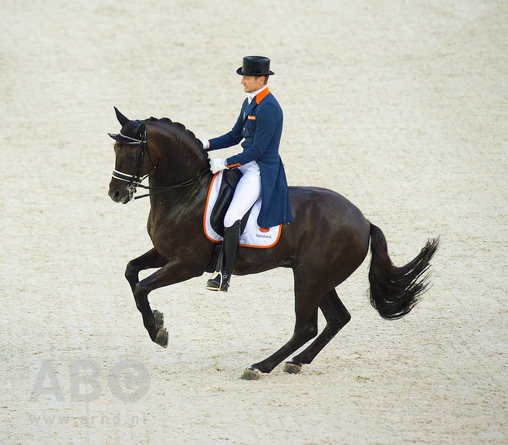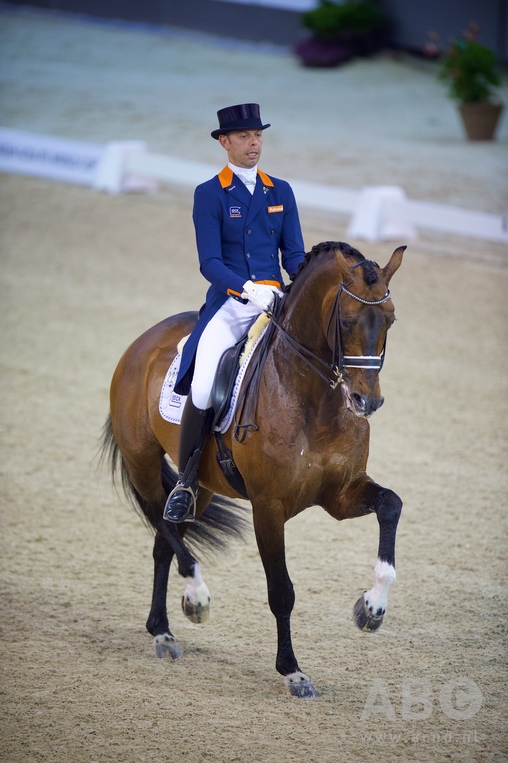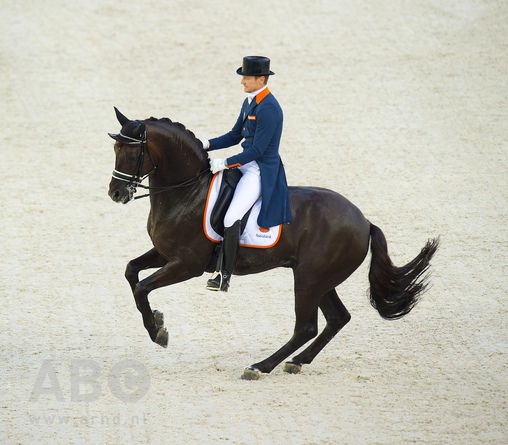 Wednesday, 13 May 2015 CDI4* CDI3* CDIU25
Wednesday, 13 May 2015 CDI4* CDI3* CDIU25Piaffe, passage, pirouette – classical dressage movements
From May 28th till May 31st 2015, the Gaston and Kathrin Glock family is hosting Dressage International at the GLOCK HORSE PERFORMANCE CENTER. For four days, world stars of dressage will meet up at the international 4 and 3 star dressage tournament. The programme is filled with top-class dressage sport, riding and equine stars as well as international stars and extraordinary show-acts.
They will delight thousands of people throughout the world, taking their audience along on a beautiful journey: these international dressage riders and their four-legged partners. They make the most demanding Grand Prix movements look easy and the horses will be dancing lightly in step. But whether piaffe, passage, pirouette – all that seems so effortless here is the result of many years of training.
The training of a Grand Prix dressage horse is characterised by enormous sensitivity. Calm and consistent work are decisive as well as the right amount of support and challenge and, most of all, a trusting relationship between rider and horse. All dressage movements have one thing in common: only if they are harmonious and present a unison between horse and rider has the aim been achieved, the fascination of dressage.
The horses would show many of the movements of advanced dressage in their natural behaviour, such as stepping on the same place, which in dressage is presented as piaffe in utmost collection. Or the impressive trot in which the horses seem to almost float above the ground. This is called passage. All movements are given marks that go from 0, which means ‘not performed’ to ‘excellent’ with the dream mark of 10.
Some are evaluated with a coefficient of 2 (i.e. being twice as important) amongst them are the movements of piaffe, passage and the canter pirouette.
Derived from the French word ‘piaffer’, piaffe means to prance and it certainly is one of the most difficult movements in advanced dressage! To the eye the horse trots on one place and this requires collection. Since the forehand (front legs) lift more, at the same time the horse shifts the hind legs beneath its body’s centre of gravity so they take on more weight. This is tiring and requires muscle power and fitness. The rider must have a sensitive hand, the connection with the horse’s mouth must be easy and with his seat, he must be smoothly accompanying the movements of the horse without showing too much of his input. This not only sounds difficult, it really is difficult! Horses such as GLOCK’s Undercover for instance, have a natural gift for piaffe. The more difficult the level, the more steps are required in these movements.
Floating and with wonderful ease is how Grand Prix horses move in passage. But here too, a lot of muscle power is required because it is one of the most difficult dressage movements. The trot steps are delayed and the hind legs must be active, the front legs are lifted higher whilst each respective diagonal pair of legs stays in the air longer. Thus the floating phase is highlighted. This requires both utmost concentration and collection from the dressage horses and this movement is also evaluated with a coefficient of 2.
Once the horses have a firm grasp of piaffe and passage, the presumably most difficult one is next: the canter pirouette. Performed correctly it requires such a high degree of collection only to be achieved after several years of training and by horses that are highly gifted. In pirouette the front legs describe a circle around the hind legs that again indicates a minimal circle around the inner hind leg. A perfect pirouette is characterised by clean timing, strong stamping of the hind legs, a minimal radius and stability in the movements.
Thus all these much-admired movements in dressage sport tell a story. A story about joint learning, training and perseverance and, in the end, about jointly celebrating successes.
GLOCK’s Entertainment in the Riders Lounge
With the theme “Horses and Stars”, there’s GLOCK-style high-class entertainment awaiting guests in the exclusive Riders Lounge:
• Gourmet entertainment
• Top-class international show acts
• Styling Lounge with star stylist Eren Bektas and his team
• Kids Lounge with creative supervision
• Cinema Lounge for little cinema fans
• Wellness Lounge (manicure, pedicure, massage)
• Dog Wellness – the very finest dog massage with Manfred Kellenc
Day tickets for Thursday, Friday and Sunday available for 300 euros per person.
Day ticket info: +43 664 88 73 44 01
Cooking Lounge
German star chef Alfons Schuhbeck will gain be delighting all in his Cooking Lounge at the GLOCK HORSE PERFORMANCE CENTER. Here, all tournament guests enjoy free entry. The cooking shows take place on Friday and Saturday at 11am, 2pm and 5pm and on Sunday at 11am and 2pm.
Free entry
The tournament arena is accessible to all visitors free of charge. In the Kids Lounge and at the Pony Riding area, fun and entertainment are guaranteed for the youngsters. Dogs have been considered too: in the Dog Lounge there’s plenty of sustenance and the very finest of massages (by appointment and subject to availability) for your faithful pets.
Fully informed
All the information about the competitions, daily summaries, lots of photos and news, along with a live stream and videos of Dressage International at the GLOCK HORSE PERFORMANCE CENTER, are all to be found at www.ghpc.at
INFOBOX
What: CDI4* CDI3* CDIU25 | Dressage International
When: 28th – 31st May 2015
Where: GLOCK HORSE PERFORMANCE CENTER Treffen, Villach
VIP day tickets for Thursday, Friday and Sunday: 300 euros per person on +43 664 887 344 01
Free entry to the competition events in the tournament arena
www.ghpc.at


